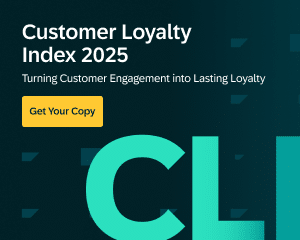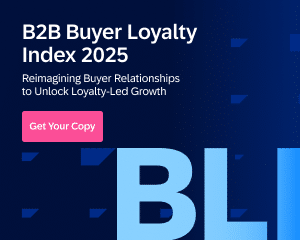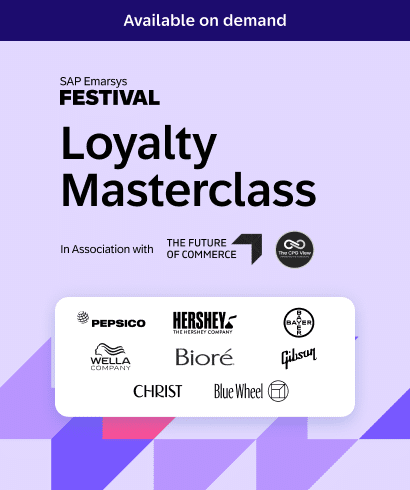Ever feel like your online store has plenty of visitors, yet they often leave without adding more items to their carts—or worse, abandon them altogether? That’s where personalized product recommendations come in.
By tuning into each shopper’s browsing habits and purchase history, you can deliver spot-on suggestions that boost average order value (AOV), reduce cart abandonment, and build genuine loyalty.
Below, you’ll find eight proven tactics—backed by real-world examples from BrandAlley—to help you get more out of every visitor. First, let’s learn about the impact of personalization, why it matters, and the types of recommendation systems.
Personalized Product Recommendations: Why They Matter
Most online shoppers say they’re more likely to revisit sites offering tailored suggestions, and personalization affects everything from engagement to cart size.
According to our research on omnichannel retention and loyalty in 2024, 31% of customers are more inclined to remain loyal when their shopping experiences feel personal.
Another prime motivator is reducing cart abandonment. In 2024, the Baymard Institute found that 70.19% of all online retail orders were abandoned—a sobering figure for any e-commerce brand. Well-timed, relevant product recommendations can help cut that rate significantly, showcasing items customers genuinely want rather than letting them slip away.
Benefits of personalized recommendations
- Decrease shopping cart abandonment: Reminding shoppers of complementary or related items during checkout—especially those they may have browsed but not added—helps curb abandonment.
- Increase average order value (AOV): Prompting customers with higher-margin accessories or bundled sets taps into impulse buys while adding genuine value. Consider adding a “Complete the Look” section for apparel or a “Frequently Bought Together” widget for electronics. You can raise each customer’s spending by highlighting items that naturally pair with their primary purchase.
- Boost session time: Keeping visitors engaged is crucial in competitive online markets. Personalized product carousels, landing pages, or dynamic recommendations tailored to users’ browsing histories encourage further exploration.
- Differentiate from competitors: By offering curated product lines or niche recommendations, you stand out from generic marketplaces and earn your customers’ trust and repeat business. Over time, this fosters deeper loyalty and positions your brand as a go-to destination for each shopper’s unique preferences.
Let’s now examine the types of recommendation systems, how each one functions, and the unique benefits they bring to e-commerce success.
8 Strategies and Best Practices for AOV Maximizing Impact

1. Leverage AI-driven insights
To push average order values higher, you need more than guesswork. AI helps dissect real-time user actions, identify patterns, and uncover hidden sales opportunities. By pinpointing what each shopper will likely want next, you can serve relevant cross-sells and upsells right when they’re most receptive.
Why it helps: Advanced algorithms quickly spot behavioral patterns and predict customer intent.
How it works:
- Real-time data processing: An AI engine analyzes current and past user actions (clicks, time spent on particular pages, items viewed) to serve relevant product suggestions on the fly.
- Predictive modeling: Forecasts a user’s next likely purchase or interest, guiding cross-sells and upsells at critical moments.
- Proactive outreach: These insights can trigger automated, personalized emails or push notifications for items a user is statistically likely to buy.
Explore how SAP Emarsys AI-driven Omnichannel Marketing empowers you to build, launch, and scale personalized, AI-driven marketing campaigns that convert buyers and drive repeat purchases.
2. Prioritize first-party data
Relying on data you’ve gathered—rather than third-party sources—builds a more accurate customer profile and fosters long-term user trust. This robust foundation makes it easier to tailor personal and relevant messaging.
Why it helps: Unified customer touchpoints (website, email, loyalty apps) enable accurate profiles and fuel consistent experiences.
How it works:
- Consolidated user profiles: Collect data directly from your brand’s interactions (e.g., sign-up forms and loyalty memberships) to ensure ownership and accuracy.
- Ongoing enrichment: Every session, click, or purchase appends more detail to a user’s profile, refining future recommendations.
- Privacy compliant: Relying on your own data helps navigate evolving regulations like GDPR/CCPA and fosters user trust.
Learn more about first-party data with our complete guide.
3. Update recommendations frequently
The items that catch a shopper’s eye today may be out of stock or overshadowed by new arrivals tomorrow. Keeping your product suggestions fresh ensures you’re always showcasing what’s current and compelling.
Why it helps: Consumer interests shift fast, and inventory changes can make older suggestions irrelevant, so constantly adapting is essential.
How it works:
- Automated refresh: Synchronize your recommendation engine daily (or more frequently) to reflect new arrivals, sold-out items, and trending SKUs.
- Seasonal and event triggers: Adjust suggestions based on holidays, flash sales, or significant events (e.g., back-to-school) to ensure you always showcase timely products.
- Dynamic shelves & widgets: If you highlight “Top Sellers” or “New Arrivals,” use real-time inventory levels to avoid promoting items out of stock, for example.
4. Align with seasonal trends
Whether it’s the festive holidays, summertime travel spree, or back-to-school rush, tapping into seasonal events can boost purchase intent. Aligning your recommendations with these temporal cues keeps your brand relevant and timely.
Why it helps: Timely promotions keyed to current events boost relevance and urgency.
How it works:
- Calendar-based campaigns: Map out major seasons (summer, holiday) and relevant local events (festivals, sporting events) to tailor recommended products.
- Behavioral cues: If user behavior shifts seasonally (e.g., buying more home office supplies in Q1), surface those items first in your recommendations.
- Localized relevance: Adjust suggestions based on region-specific climates or cultural celebrations.

5. Optimize for mobile
With more people browsing on smartphones than ever, a friction-heavy mobile experience can push users away—dropping your AOV. Presenting recommendations in a sleek, mobile-friendly format is key to sustained engagement and more substantial cart totals.
Why it helps: Most shoppers browse via smartphones, so having a clunky layout can hamper engagement.
How it works:
- Carousel & swipeable widgets: Display recommended items in easy-to-navigate horizontal lists without overloading smaller screens.
- Responsive design: Ensure your product recommendation pop-ups or banners adapt seamlessly to various mobile devices.
- Speed & usability: Quick load times and minimal friction encourage deeper browsing, which can reveal more product recommendations.
Want to learn more about mobile optimization? Check out how SAP Emarsys’s Mobile Customer Engagement solution helps you grow the lifetime value of mobile-first customers through data-enriched personalization and other methods.
6. A/B test placement and formats
Small design tweaks—like changing headline text or swapping a slider for a grid layout—can make a big difference in conversions. A structured A/B testing strategy shows what truly resonates, boosting both user satisfaction and sales figures.
Why it helps: By running A/B tests, you can evaluate the impact of changes made to content and audience targeting through metrics such as reach, engagement, click-through rate, and conversion.
How it works:
- Testing framework: Run controlled experiments on a subset of users, comparing variations in recommendation widgets (e.g., “Complete the Look” vs. “Trending Now”).
- Key variables: Layout styles (grid vs. slider), headings, or location on the page.
- Actionable results: Determine which version maximizes click-through, add-to-cart rate, or AOV, then roll out the winner.
7. Integrate across key touchpoints
Customers hop between search pages, homepages, product detail sections, and the checkout flow – this has been the norm recently. Showing relevant product suggestions at each of these junctures consistently can significantly raise the overall cart value.
Why it helps: Consistent exposure to relevant items throughout the user journey keeps your brand top-of-mind.
How it works:
- Search results page: Offer alternatives when no exact match exists—reducing user frustration.
- Homepage: Greeting returning visitors with recently viewed or related products.
- Product page: Highlight “Frequently Bought Together” or “You May Also Like” combos.
- Cart: Suggest last-minute add-ons or complementary accessories.
- Post-purchase email: Promote items to extend the customer’s experience (e.g., refills, compatible gear).
Key insight: Holistic integration ensures each touchpoint reinforces the next, creating a unified brand and shopping experience.
8. Monitor Behavioral Shifts
Trends and preferences can shift overnight—one item might surge in popularity due to social buzz, while another falls off the radar. Monitoring these changes in near real-time keeps your recommendations from becoming stale or irrelevant.
Why it helps: Consumer tastes pivot quickly; real-time analytics ensure your strategy adapts.
How it works:
- Behavior tracking: Use session recordings or heatmaps to see where users linger or drop off.
- Dynamic dashboards: Access real-time performance metrics (click-through rates, add-to-cart rates) and respond promptly if user behavior changes.
- Adapt campaigns: If a product starts trending overnight, feature it in your recommendations or highlight it in an email campaign the following day.
In action: Adidas Running App’s Real-Time Triggers show how swiftly reacting to new user data can drive engagement and retention across the entire funnel.
Challenges and Considerations to Bear in Mind
Creating a data-driven recommendation engine can yield great results, but it can have several hurdles. Understanding these challenges upfront and planning to overcome them ensures your personalization strategies stay robust and compliant.
Data volume limitations
Smaller retailers often lack the vast data sets required for more accurate, AI-driven personalization. Sparse datasets can undermine recommendation accuracy and leave you with generic suggestions that fail to resonate. Possible solutions:
- Supplement with external insights: Boost your first-party data by incorporating responsibly sourced third-party demographics or contextual data (e.g., regional trends). Even a modest amount of additional information can refine predictions.
- Adopt hybrid recommendation models: Combine collaborative and content-based filtering. This approach balances what you know about your products with limited user data, ensuring suggestions are at least partially relevant—even if individual browsing histories are thin.
- Tap into SAP Emarsys’ capabilities: By unifying existing purchase, email, and loyalty app behavior, smaller brands can still build cohesive user profiles. Emarsys’ AI can then deliver meaningful product recommendations. Learn more.
Privacy Concerns
Amid regulations like GDPR and CCPA, brands must carefully handle customer data. Although personalization thrives on details, it must be balanced with transparent data collection and usage practices. Possible ways to address it:
- Implement transparent opt-ins: Let customers know exactly how and why you use their data. Make it simple to grant or withdraw consent. This clarity fosters trust and long-term loyalty.
- Anonymize behavioral data: Store user interactions without tying them to personally identifiable info where possible. This approach still guides compelling recommendation logic without overexposing personal details.
- Put customers in control: Offer preference centers, letting users fine-tune their privacy or personalization settings.
By proactively tackling data volume and privacy challenges, you can build robust recommendation systems aligning with user expectations and regulatory requirements.
Technological Implementation and Future Trends
Modern recommendation engines combine AI with real-time data, focusing on three key layers:
- Data layer: Collects web analytics, CRM data, and POS records to build comprehensive shopper profiles.
- AI models: Incorporate both collaborative and content-based filtering to generate relevant product suggestions.
- Delivery layer: Integrates with e-commerce sites, email campaigns, or mobile apps to serve recommendations at the ideal moment.
Looking ahead, the next generation of recommendation systems will emphasize:
- Contextual awareness: Accounting for real-time factors like local weather or location-based data to tailor suggestions.
- Voice commerce: Seamless integration of recommendations into voice-assistant shopping experiences.
- Privacy-first personalization: Employing differential privacy or anonymized insights so customers feel safe sharing their data.
Why it matters: These trends empower e-commerce brands to deliver more innovative, relevant experiences while respecting user privacy.
Pro tip: SAP Emarsys Omnichannel Customer Engagement Platform for e-Commerce helps you grow a database of engaged, high-value shoppers and dramatically improve time to value with pre-built, AI-powered marketing automation.
Real-World Example: BrandAlley Leverages Predictive Personalization at Scale
Challenge: Generic email blasts were yielding diminishing returns. Their marketing team could see in their customer lifecycle that customers were lapsing, but it was too late by the time they had the insight.
Solution: Deployed AI models to predict customer preferences, particularly for mid-funnel users. They also improved AOV lift by placing “Frequently Bought Together” widgets directly on product pages—turning a single-item visit into a multi-item purchase.
Results:
- 10% higher AOV through tailored product offerings
- 28% faster inventory turnover for seasonal goods
Key takeaway: This rise in average order value illustrates the effectiveness of personalized product recommendations in driving revenue growth. BrandAlley demonstrated adaptability by adjusting its product offerings and marketing strategies during the pandemic.
Focusing on the home and garden categories, they achieved a remarkable 130% revenue increase from these segments. This highlights the importance of understanding and responding to shifts in consumer behavior.
Final Thoughts and Next Steps
As we know, personalized product recommendations consistently raise AOV, reduce cart abandonment, and deepen loyalty. By applying the eight best practices—fueled by unified data, AI algorithms, and regular testing—you can craft the tailored experiences online shoppers now demand.
From abandoned carts to customer churn, SAP Emarsys Customer Engagement Platform identifies key growth opportunities and helps you capitalize on them quickly. Its strategies are easy to use and can be executed with a single click.
Ready to sharpen your recommendation strategy? Book a demo to discover how AI-driven personalization can integrate across your entire customer journey, from the homepage to post-purchase outreach, ultimately driving higher AOV and long-term growth.







